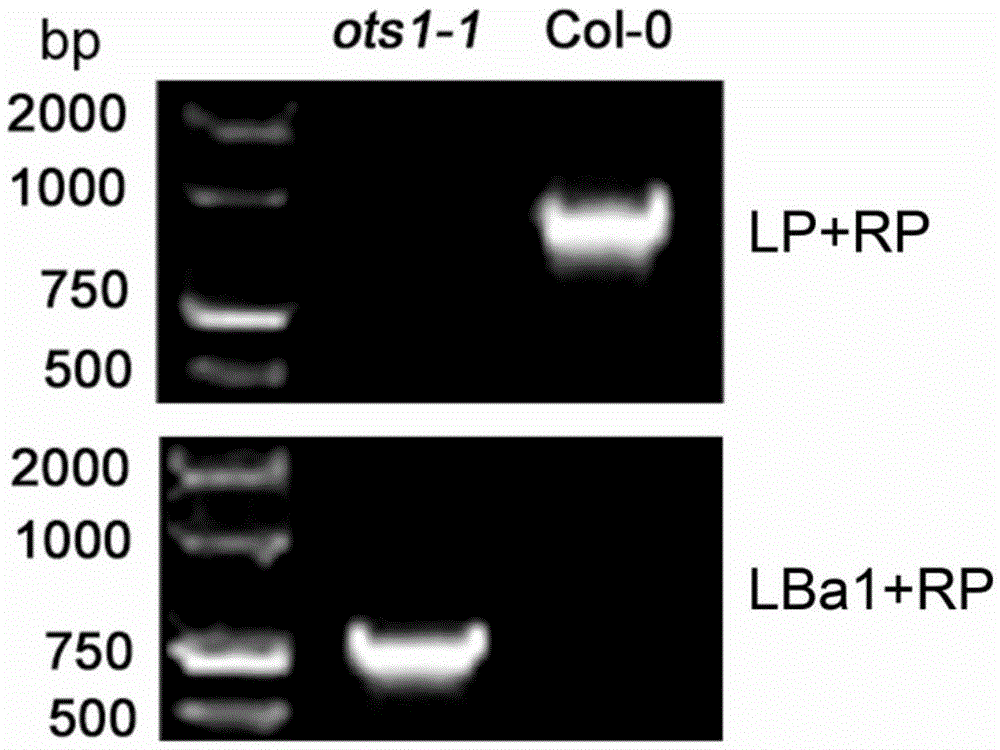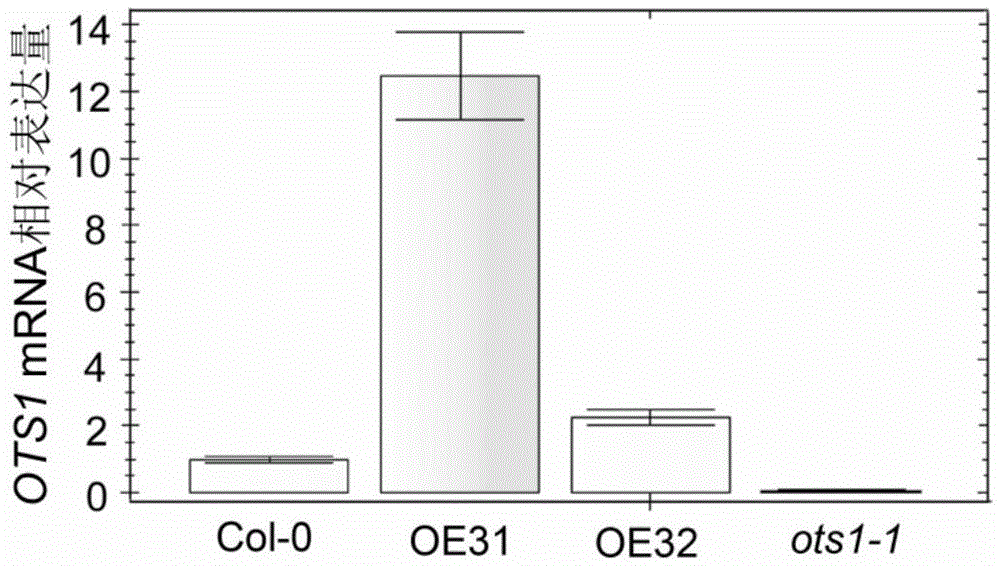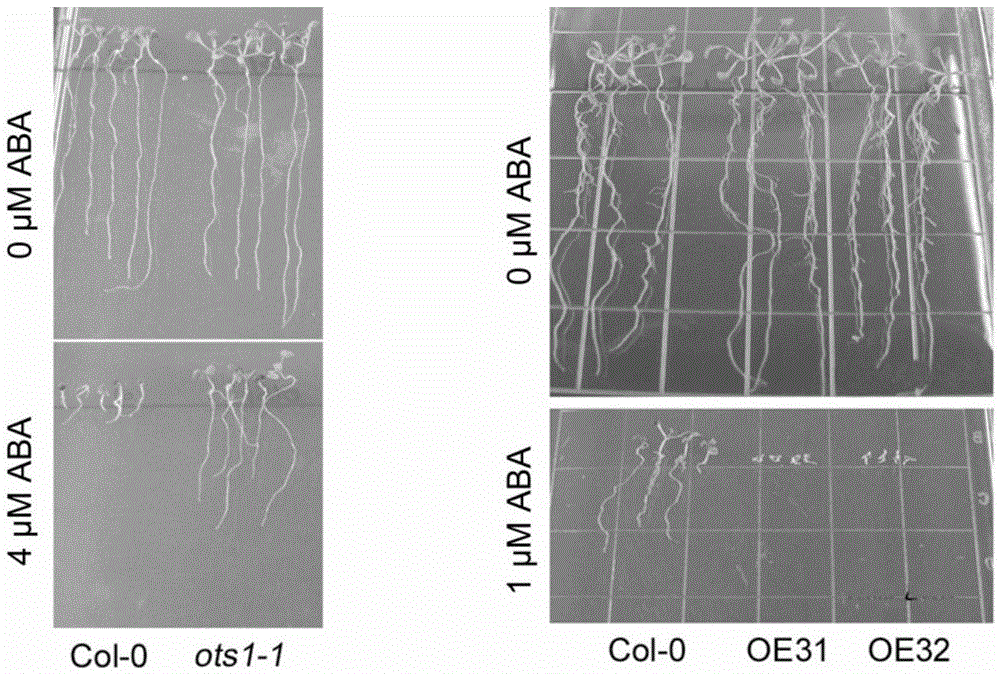Application of OTS1 protein and coding genes thereof to control over ABA tolerance of plant
An encoding gene and transgenic plant technology, applied in the application field of OTS1 protein and its encoding gene in regulating plant tolerance to ABA, can solve the problem of deteriorating seed quality, seed value and storability, agricultural production loss, consumption Issues such as nutrition and storage substances
- Summary
- Abstract
- Description
- Claims
- Application Information
AI Technical Summary
Problems solved by technology
Method used
Image
Examples
Embodiment 1
[0066] Embodiment 1, the acquisition and identification of OTS1 transgenic plants
[0067]The OTS1 gene involved in this example is derived from Arabidopsis thaliana (Arabidopsisthaliana), and its sequence in the Arabidopsis genome is shown in sequence 1 in the sequence table. Sequence 1 consists of 3840 nucleotides, of which the 343rd- 605th, 649-770th, 917-1035th, 1350-1503rd, 1553-1884th, 1971-2050th, 2081-2160th, 2257-2358th, 2462-2580th , 2679-2761, 2885-3030, 3146-3283, and 3392-3477 are intron sequences; sequence 2 consists of 2016 nucleotides and is the cDNA sequence of the OTS1 gene, Positions 1-1755 are the coding sequence (ORF); Sequence 1 and Sequence 2 both encode the protein shown in Sequence 3 in the Sequence Listing, and Sequence 3 consists of 584 amino acid residues.
[0068] 1. Construction of recombinant expression vector pCAMBIA-1300-221-OTS1
[0069] The total RNA of Arabidopsis wild-type (Col-0 ecotype) was extracted, and cDNA was obtained after reverse...
Embodiment 2
[0110] Embodiment 2, each genetic material of OTS1 is to the ABA tolerance analysis test
[0111] 1. Effect of ABA on seedling growth of each genetic material of OTS1
[0112] ABA can inhibit the growth of plant seedlings. With the increase of exogenous ABA concentration, the inhibition of Arabidopsis wild type (Col-0 ecotype) was enhanced, and the growth of its main root and leaves would be affected to varying degrees. The experiment was repeated three times.
[0113] The single-copy inserted T 3 The homozygous OTS1 transgenic lines (OE31 and OE32) and the control plants obtained in Example 1 transformed into the pCAMBIA-1300-221 empty vector were used as experimental materials. Seeds of each experimental material were sown on MS plates not containing ABA, stratified at 4°C for 3 days at low temperature, placed in a light incubator for 60 hours, and then the newly germinated seedlings of each experimental material were moved to the medium containing different concentrations...
PUM
 Login to View More
Login to View More Abstract
Description
Claims
Application Information
 Login to View More
Login to View More - R&D
- Intellectual Property
- Life Sciences
- Materials
- Tech Scout
- Unparalleled Data Quality
- Higher Quality Content
- 60% Fewer Hallucinations
Browse by: Latest US Patents, China's latest patents, Technical Efficacy Thesaurus, Application Domain, Technology Topic, Popular Technical Reports.
© 2025 PatSnap. All rights reserved.Legal|Privacy policy|Modern Slavery Act Transparency Statement|Sitemap|About US| Contact US: help@patsnap.com



